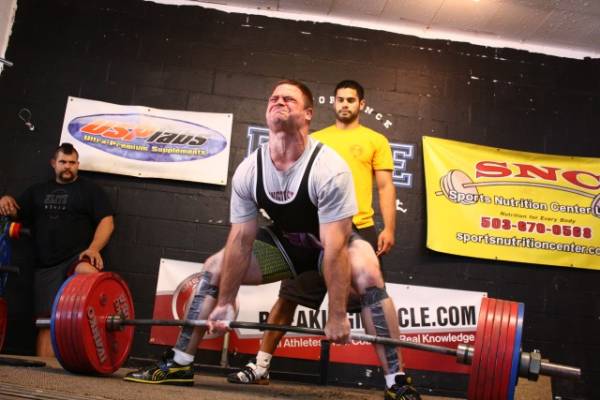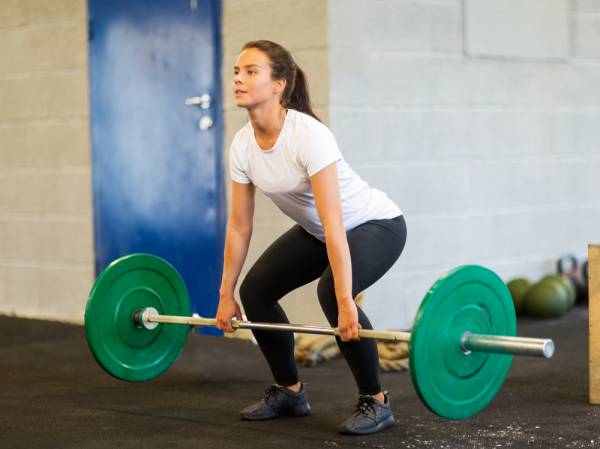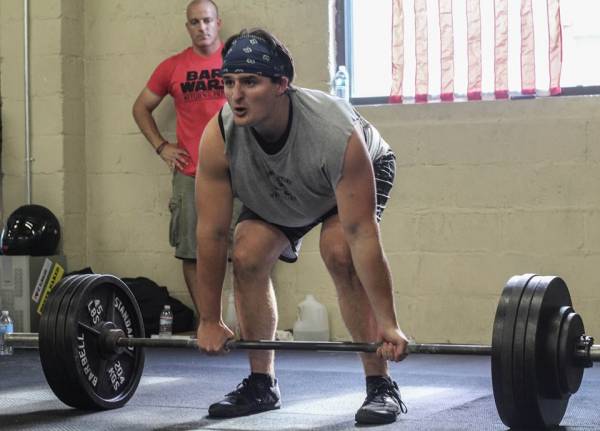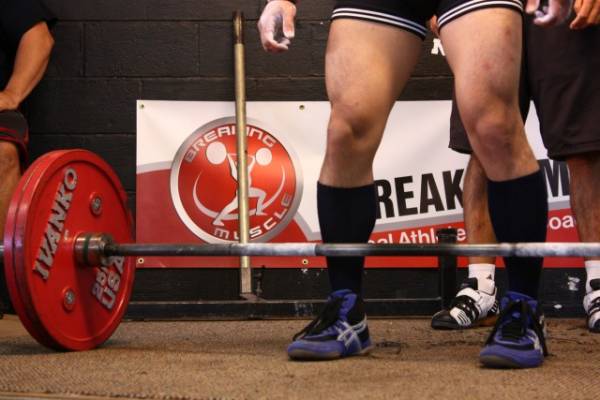Internationally, most people know me for my spinal rehabilitation. But in Australia I’m especially known for my analysis of lifting technique.
My approach is unique because it comes from a nearly thirty-year history of resistance training on top of a physiotherapy science background, research of the topic, and devotion to understanding the science of injury production, which conversely is about injury prevention. Professionally, my analysis is of all lifts. This article is only about deadlifting.
Experience makes a person “see” things at an unconscious level and we often take for granted that others see things the same way. This article will show you how I “see” a deadlift when a person comes to me for rehabilitation and analysis.
I’ve broken down the art of deadlifting to an exact science and I’ll show you how recognition of basic physics and applied biomechanics can produce the perfect deadlift position for anyone. Just remember, if you use my work in the future then acknowledge the source. Like most other geniuses I have a healthy ego.
WARNING: This article is about analysis. Anyone who makes a comment about the dangers of spinal flexion in relation to this article is officially deemed a moron. This is not an article discussing loading spinal flexion. It is about biomechanical analysis. Restrict your discussion to the topic.
Base of Support and Center of Mass
Just for the semantics, in deadlifting as the person is close to the surface of the earth the terms center of mass and center of gravity may be interchanged without issue.
“Physics, biomechanics, anthropometrics, musculoskeletal mobility, strength, and weakness are all evaluated to produce a person’s ideal deadlift technique.“
Anyone who has simple martial arts and contact sports experience understands that if you move an opponent’s center of mass outside of his base of support, he will fall over. So it is with deadlifting. The aim of the combined human and loaded bar mass is to remain within the base of support (your feet).
Sounds simple? It is. So, when I work with a person, I observe his or her foot posture. For example in the conventional stance, the feet are closer together and this reduces the base of support compared to sumo stance, which increases the base of support. But in sumo, if the feet are pointing laterally out, then the anterior and posterior stability is decreased. I’m not discussing muscle recruitment here, or why we choose one stance over another, that will follow. This is to show you that foot position is an important consideration in regard to an individual’s deadlift and not to be ignored.

The bar then must travel as close to the person’s center of mass to minimize unwanted horizontal energy expenditure. We aim to keep the bar’s mass as close to the lifter’s center of gravity as possible. This is why the bar begins as close to your tibia/shin as you can get it. The bar must be close to the body.
Ground Reaction Force
We lift in accordance to Newton’s third law, often referred to as the action-reaction law. This describes the forces between two bodies. In deadlifting, one body is the combined human being and loaded bar, while the other body is the earth itself. We exert a force upon the earth with our feet and the earth exerts an equal force back to us (essentially a simultaneous event). This is the ground reaction force.
Vertical and Horizontal Force Vectors
Consider that a vector is a mathematical expression of the direction of force. Simplified for this article, we can consider that when the forces are resolved, there are two force vectors at work, either vertical or horizontal. Now the fun begins.
“When the tibia is vertical, then you have vertical force application to the ground. Any flexion at the ankle will dissipate the vertical force to include a horizontal vector, a waste of force.”
Deadlifting is an endeavor where we aim to lift the bar from its resting position in a vertical manner to upright lockout. There is no rationale to produce a horizontal force upon the earth. Any horizontal vector will be wasted energy that could have been added to the vertical vector. Perfect deadlifting is theoretically a purely vertical vector. That’s what I look for.
Combine the Concepts
Combine the concept of maximizing the vertical vector to the ground reaction force and you will produce maximum potential vertical lifting force (MPVLF). I just created that term, but it looks good and describes the concept – consider that a first.
Bring in the biomechanics now. The bone that can be used as a visual indicator of vector direction is the tibia, or shin. When the tibia is vertical, then you have vertical force application to the ground. Any flexion at the ankle will dissipate the vertical force to include a horizontal vector, a waste of force.

When I observe this in a patient, I take both front and side views to ensure the tibia position is vertical. When you photograph or video your own lifting, ensure you take both of these views at some point. Problems with vertical tibia production can be mobility, segmental strength, or movement-pattern based.
This applies to both conventional and sumo variations. The vertical tibia is the prerequisite for the most efficient force transmission in all stances. Understanding the principles behind the choices of foot position now follows. It does not mean that some champions don’t break the rule. I’m just helping you by starting with the rules. When you are good enough, you will understand variations.
The Aim: To pull the bar in a vertical vector through the shortest possible distance using the individual’s most efficient musculoskeletal tools.
Anthropometric Lengths and Stance Application
Human beings bodies vary in many ways. The bones of the skeleton are considered the levers through which forces are applied. This is part of the consideration as to what is going to be your best stance. Consider initially two segments of the body:
- Lower body – from the pelvis to the feet
- Upper body axial skeleton – from pelvis to shoulders
As a generalization for the purposes of this article, consider these as two separate segment lengths.
Torque minimization is the evaluation of these two segment lengths. Clearly, we wish to move the bar the shortest distance possible from the ground to lockout and minimize torque forces upon the body by the weight. As a general rule, you will start by minimizing the movement of your longest length. This is the first consideration as to whether you will be best suited to conventional or sumo stance. Minimize your longest segment.
If your torso is short, you will often tend to be conventional stance. This means you are more likely to be a person who is going to pull from your back rather that your hips. This style of pull will invariably lose the lumbar lordosis and flex the spine to use the erector spinae, especially the thoracic erector spinae, when compared to sumo.

There is nothing wrong with that, if you have good coaching. People with a lack of spinal education are rightly scared of loading flexed lumbar spines. But world records are often set that way. If you don’t know what you are doing, you can get hurt. This article is not about how to understand why spinal flexion occurs or recognition of its dangers. This article is about the analysis principles, only that.
With a lifter of very short torso length, the lifter will often appear to have “long arms.” This is more often an illusion, the person having normal arm length, but very short torso length. The truly long-armed and short-torso lifter is predisposed for short pulling distance. The conventional stance will typically load the hamstrings as the hips move over the vertical tibia to find their tension point to lift from. These rare conventional lifters may also then be able to reduce their hamstring involvement further by pointing their toes out and almost totally load their lumbar musculature.
Sumo lifters tend to minimize their longer torso lengths by using their legs and hips as the major force production, as such they will be more upright and use more glute and hamstring tension for the lift. To decrease the torso length effect, the feet are placed wider and the torso becomes more upright.
“[F]oot position is an important consideration in regard to an individual’s deadlift and not to be ignored.“
The basic physics of lifting is established. These are principles I see when I’m asked to evaluate someone’s deadlift. The more you practice, the better you will get at seeing this, too.
Foot Width
Now comes the influence of biomechanics and personal anthropometrics when we consider the mobility of the components of the individual’s joints. A person’s mobility of the hips and lumbar spine will have a huge relationship to his or her achievable position.
Note: Not the ankles, though. Never the ankles. If you want to argue about this after reading this far into my article, then go and buy a coloring book and pencils, because the whole topic must have gone so far over your head that you are beyond saving. Turn off your computer. Do not contact me.

When I identify a person who can improve his or her mobility, I prescribe an appropriate mobility for those joints to achieve. So although I may initially find a good foot position for a person in sumo, should I assess him or her as having potential to change that to his or her benefit, then I aim for that as a longer goal. Today’s optimal stance may change as the lifter becomes more able to increase mobility.
Muscular Strength
Apart from the applied physics, we must consider the real world individual’s strength and weaknesses. It is no good getting a perfect lifting posture that may emphasize glute dominance in sumo if that person has weak gluteals. Conversely, a conventional lifter with weak erector spinae will not be effective.
“Today’s optimal stance may change as the lifter becomes more able to increase mobility.“
We may have found our ideals, but now we have to apply an appropriate strengthening regimen to that person’s weak links before it can become effective. Often the correct technique may be weaker for a lifter compared to what he or she is used to until that lifter builds the new strength patterns. This will yield a long and less-injury prone career, rather than the shooting star and serious injury path.
With foot posture, you have a general rule to apply. When the toes face forward, you will be recruiting the hamstrings in the lift. The further out the toes point, the greater the gluteal recruitment. The further the toes point out, the less anterior and posterior stability you have. But if your vector production is vertical, then this is not going to be a problem. While you learn the technique, it will cause some frustration. Get over it.
Evaluation of the posterior chain musculature, personal strength patterns and weaknesses, and their contributions to the determined stance are imperative in the progression of a lifting routine and plan.
Summary
Physics, biomechanics, anthropometrics, musculoskeletal mobility, strength, and weakness are all evaluated to produce a person’s ideal deadlift technique. So next time you see a person who deadlifts and imitates a squat by placing his shins and knees over the bar, observe how loose and uncoordinated that lift appears. He probably read Starting Strength. Tightness and tension production are the goals to transmit force to the ground. Just ask Pavel.
Take your time to understand all that is written above. It gets easier the more you practice. There is so much to consider – physics, body mechanics, joint mobility, and neuromuscular strength and its coordination. If you wish to be a good coach, you need to be able to identify and understand all of these elements, and you need to practice observation. I never said it was easy. Just remember, overnight success only takes about ten years.
Check out these related articles:
- 15 Practical Strategies for Increasing Your Deadlift Max
- Mobility Video – Arching the Back for Greatness
- Why You Should Vary Your Back Squat Stance
- What’s New On Breaking Muscle Today
Photos 1, 2, and 5 courtesy of Becca Borawski Jenkins.
Photo 3 courtesy of Shutterstock.
Photo 4 courtesy of Shannon Khoury.






